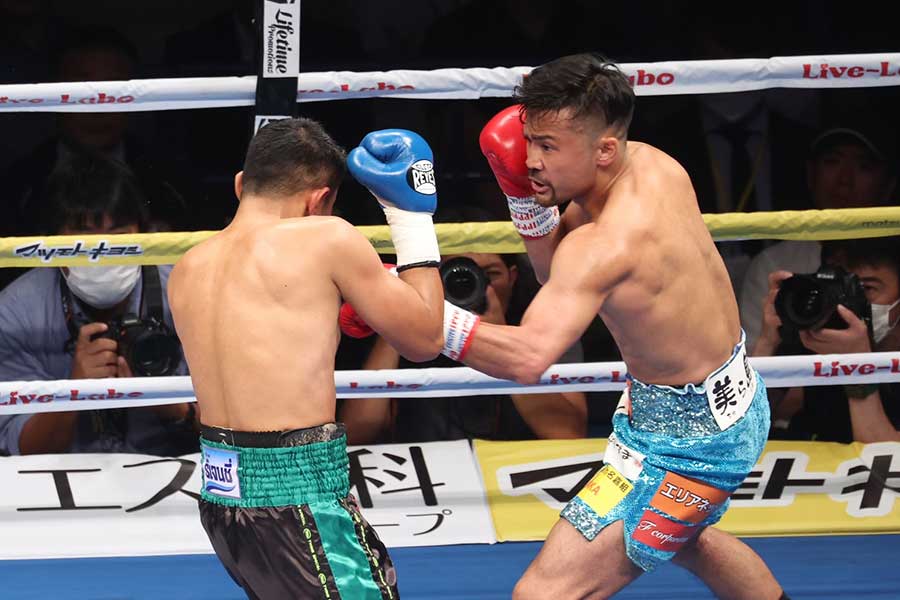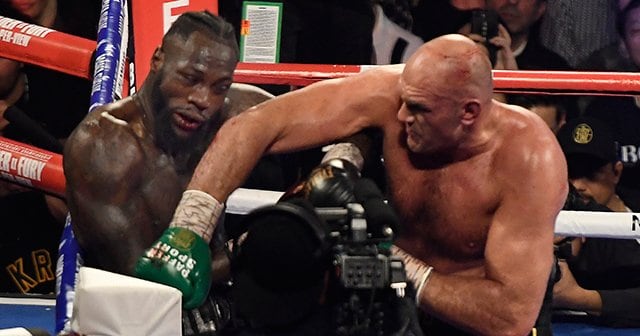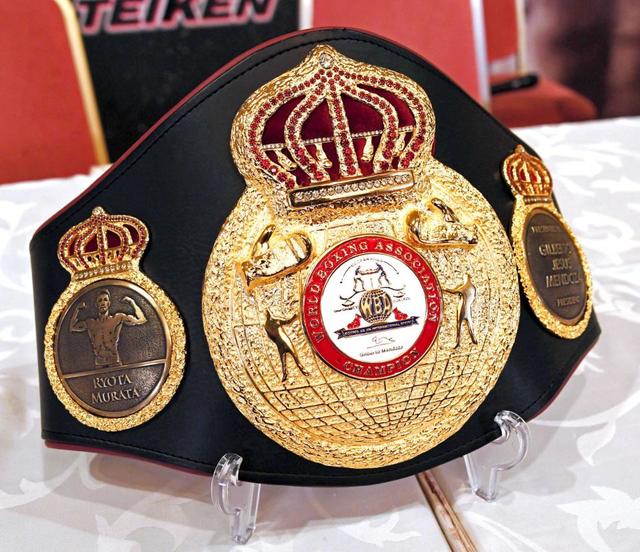
Boxing has multiple weight classes.
Classes may differ slightly depending on the organization, but the general classifications in the major professional boxing organizations, WBC (World Boxing Council), WBA (World Boxing Association), IBF (International Boxing Federation), and WBO (World Boxing Organization), are as follows: We will introduce the weight classes in descending order of weight.
目次
- 1 Boxing weight class list
- 2 Characteristics of each class
- 3 Champion by class
- 3.1 Minimum weight (105 lbs/47.627 kg)
- 3.2 Light flyweight (108 lbs/48.988 kg)
- 3.3 Flyweight (112 lbs/50.802 kg)
- 3.4 Super flyweight (115 lbs/52.163 kg)
- 3.5 Bantamweight (118 lbs/53.524 kg)
- 3.6 Super bantamweight (122 lbs/55.338 kg)
- 3.7 Featherweight (126 lbs/57.153 kg)
- 3.8 Super Featherweight (130 lbs/58.967 kg)
- 3.9 Lightweight (135 lbs/61.235 kg)
- 3.10 Super Lightweight (140 lbs/63.503 kg)
- 3.11 Welterweight (147 lbs/66.678 kg)
- 3.12 Super welterweight (154 lbs/69.853 kg)
- 3.13 Middleweight (160 lbs/72.574 kg)
- 3.14 Super middleweight (168 lbs/76.204 kg)
- 3.15 Light heavyweight (175 lbs/79.378 kg)
- 3.16 Cruiserweight (200 lbs/90.719 kg)
- 3.17 Heavyweight (over 200 lbs/90.719 kg)
- 4 Training and meal plans for boxing weight control
Boxing weight class list
- Minimumweight (strawweight) : 105 pounds (47.63 kilograms) or less
- Light flyweight (junior flyweight) : 108 pounds (48.99 kilograms) or less
- Flyweight : 112 pounds (50.80 kilograms) or less
- Super flyweight (junior bantamweight) : 115 pounds (52.16 kilograms) or less
- Bantamweight : 118 pounds (53.52 kilograms) or less
- Super bantamweight (junior featherweight) : 122 pounds (55.34 kilograms) or less
- Featherweight : 126 pounds (57.15 kilograms) or less
- Super featherweight (junior lightweight) : 130 pounds (58.97 kilograms) or less
- Lightweight : 135 pounds (61.23 kilograms) or less
- Super lightweight (junior welterweight) : 140 pounds (63.50 kilograms) or less
- Welterweight : 147 pounds (66.68 kilograms) or less
- Super welterweight (junior middleweight) : 154 pounds (69.85 kilograms) or less
- Middleweight : 160 pounds (72.57 kilograms) or less
- Super middleweight : 168 pounds (76.20 kilograms) or less
- Light heavyweight : 175 pounds (79.38 kilograms) or less
- Cruiserweight (junior heavyweight) : WBC, WBA: 200 lbs (90.72 kg) or less, IBF, WBO: cruiserweight limit is 200 lbs (90.72 kg).
- Heavyweight : No limit
For these weight classes, the weight of the athlete will be measured at the pre-match weigh-in, and the match will be held in that weight class.
If your weight exceeds the upper limit of your weight class, you will not be able to fight in that weight class.
It is also common for athletes to adjust their weight in preparation for a match.

Characteristics of each class
Each weight class in boxing is a category based on the weight of the fighter.
This allows competition to be held between athletes of similar weight, so we can expect a fair and balanced match.
The meaning and characteristics of each class are briefly explained below.
- Minimumweight (strawweight) : The lightest weight class, requiring very fast movement and stamina.
- Light flyweight (junior flyweight) : A class that requires skill and speed despite being small in stature.
- Flyweight : A weight class where speed and technique are important.
- Super flyweight (junior bantamweight) : More power than flyweight is required, but speed is also an important factor.
- Bantamweight : Requires a balance of technique, power, and speed.
- Super Bantamweight (Junior Featherweight) : A weight class that features more diverse tactics and solid defense.
- Featherweight : The balance between power and technique is especially important.
- Super Featherweight (Junior Lightweight) : A class that stands out for its strong strikes and technique.
- Lightweight : Lots of technical fights and displays of power.
- Super Lightweight (Junior Welterweight) : Requires advanced technique and tactics.
- Welterweight : Requires strong physical strength and technique.
- Super welterweight (junior middleweight) : A combination of power and skill is the key.
- Middleweight : Characterized by powerful punching power and tactics.
- Super middleweight : A bridge class to the heavyweight division, requiring power and skill.
- Light Heavyweight : Relatively light among heavyweights, but requires strong strikes and durability.
- Cruiserweight (junior heavyweight) : Requires power similar to heavyweight, but with more movement.
- Heavyweight : No weight limit. It is the heaviest weight class and has many fighters with the most powerful punching power.
Each weight class has different characteristics, not only in the weight of the athletes, but also in the deployment of tactics and techniques.
This system creates an environment where a variety of styles and techniques can compete while avoiding unfairness due to weight differences.

Champion by class
The history of boxing is filled with legendary champions in each weight class.
There are too many names to cover all weight classes, but we will highlight some of the most impressive champions in each major weight class.
Let’s take a look at the notable athletes in the current 17 major weight classes.
Minimum weight (105 lbs/47.627 kg)
- Ricardo Lopez : Known as the undefeated champion, he dominated the minimumweight division for many years.
Light flyweight (108 lbs/48.988 kg)
- Michael Carbajal : A great American fighter who had many memorable fights in the light flyweight division.
Flyweight (112 lbs/50.802 kg)
- Jimmy Wilde : British flyweight champion known for his speed and punching power.
Super flyweight (115 lbs/52.163 kg)
- Roman González : Nicaraguan superstar and multi-division world champion.
Bantamweight (118 lbs/53.524 kg)
- Ederi Joffre : A Brazilian native who is undefeated in the bantamweight division.
Super bantamweight (122 lbs/55.338 kg)
- Wilfredo Gomez : Originally from Puerto Rico, he had a long reign in the super bantamweight division.
Featherweight (126 lbs/57.153 kg)
- Willie Pep : Possessed excellent defensive skills and won 229 matches at featherweight.
Super Featherweight (130 lbs/58.967 kg)
- Julio Cesar Chavez : Legendary Mexican fighter who was a champion in multiple weight classes, including super featherweight.
Lightweight (135 lbs/61.235 kg)
- Roberto Duran : A legendary Panamanian fighter known as the “Hands of Stone.”
Super Lightweight (140 lbs/63.503 kg)
- Floyd Mayweather Jr .: Undefeated in multiple weight classes including super lightweight.
Welterweight (147 lbs/66.678 kg)
- Sugar Ray Leonard : dominated the welterweight division in the 1980s and had multiple legendary fights.
Super welterweight (154 lbs/69.853 kg)
- Tommy Hearns : He had incredible punching power and was nicknamed the “Hitman.”
Middleweight (160 lbs/72.574 kg)
- Marvin Hagler : dominated the middleweight division for many years and had many memorable matches.
Super middleweight (168 lbs/76.204 kg)
- Joe Calzaghe : From Wales, he is undefeated in the super middleweight division.
Light heavyweight (175 lbs/79.378 kg)
- Archie Moore : Holds the record for most knockouts in a light heavyweight division.
Cruiserweight (200 lbs/90.719 kg)
- Evander Holyfield : He was extremely dominant at cruiserweight and later found success at heavyweight.
Heavyweight (over 200 lbs/90.719 kg)
- Muhammad Ali : Nicknamed “The Greatest,” he is an icon of heavyweight boxing.
These fighters went on to have impressive careers in boxing history in their respective weight classes.

Training and meal plans for boxing weight control
Boxing requires effective training and a proper diet plan in order to meet the weight limits within your division.
Weight management must be strategic, and it is important to maintain a weight and physical condition that allows for optimal performance without compromising health.
Below you will find a basic training and meal plan for weight control in boxing.
training plan
-
Cardio training : Cardio training such as running, cycling, and skipping rope are effective ways to increase your endurance and burn fat efficiently. It is recommended that you do at least 30 minutes of moderate-to-high-intensity cardio training several times a week.
-
Interval training : High-intensity interval training (HIIT) is highly effective for burning fat and improving endurance. Alternate short periods of high-intensity exercise and low-intensity exercise.
-
Strength training : To improve overall strength and maintain muscle mass, strength training two to three times a week is effective. These include bodyweight exercises, free weights, and machine-based training.
-
Boxing-specific training : Boxing-specific technical training such as punching bags, mitt hitting, and sparring is also important. These trainings contribute not only to weight management, but also to improving fighting techniques.
meal plan
-
Balanced diet : Eat a balanced diet consisting of protein, complex carbohydrates, and healthy fats. Include plenty of vegetables, fruits, whole grains, and quality proteins (such as chicken, fish, and legumes).
-
Hydration : Proper hydration is essential for weight management and improved performance. Drink enough water not only during exercise but also in daily life.
-
Eat smaller meals : Keep your metabolism active by eating five to six small meals a day instead of three large ones.
-
Limit your intake of processed foods and sugar : Limit your intake of processed and high-sugar foods to avoid unnecessary fat storage.
Weight adjustment should not be done forcefully in a short period of time, but should be done systematically in preparation for the match.
By combining proper training and nutrition, it is possible to control and lose weight without harming your health.




